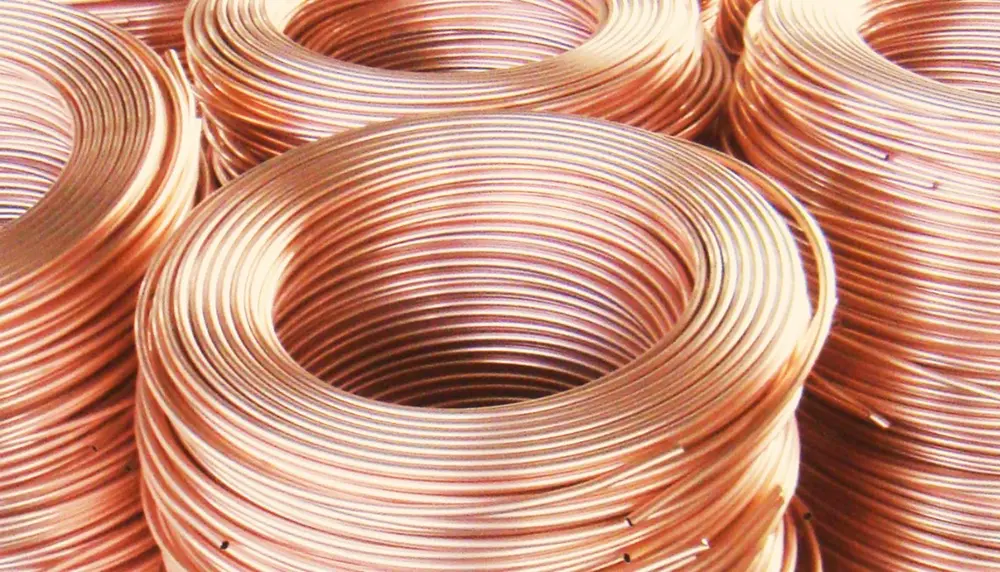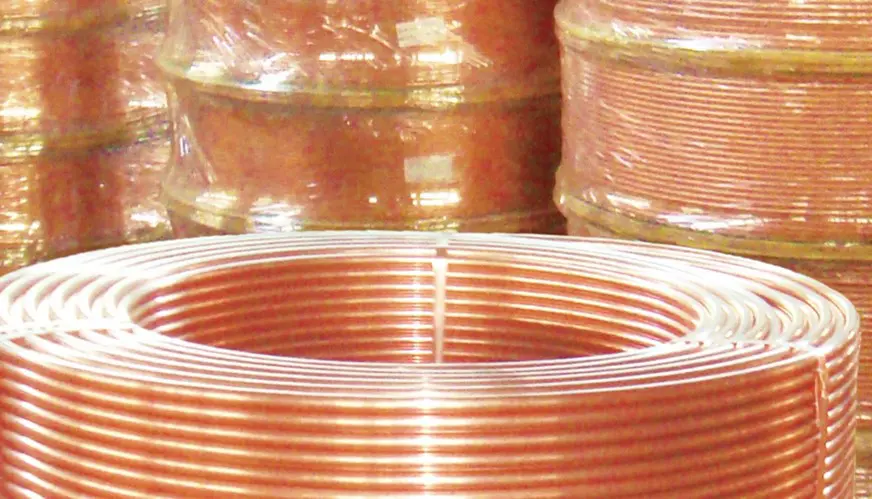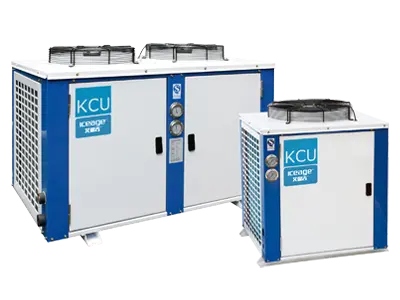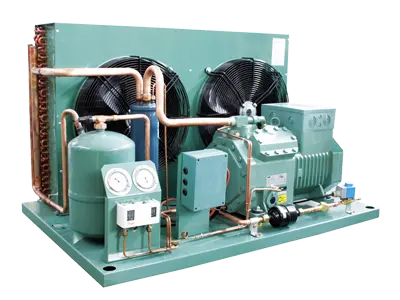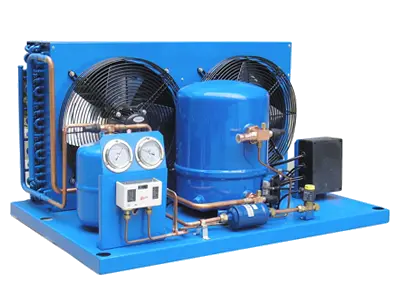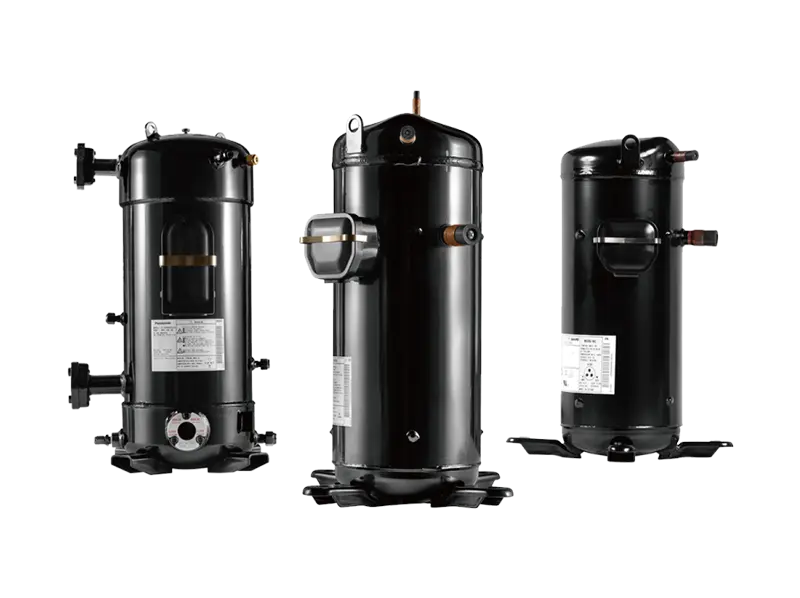Refrigeration
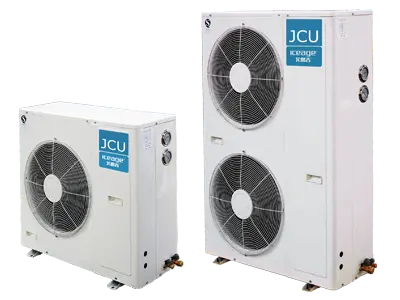 Through the compressing and suction of the compressor, refrigerant circulates in the pipeline, and evaporates and absorbs heat at the low pressure side (evaporator) to reduce the temperature of the air around the evaporator, and sends cold air into the room (or cold storage); by condensing at the high-pressure side (at the condenser) and dissipates the hot air that has absorbed the heat into the atmosphere. When the refrigeration system is working, the heat from the room (or in the cold storage) is "moved" to the outside, thereby reducing the temperature of the indoor (or cold storage) air through the conversion of the gaseous and liquid states of the refrigerant.
Through the compressing and suction of the compressor, refrigerant circulates in the pipeline, and evaporates and absorbs heat at the low pressure side (evaporator) to reduce the temperature of the air around the evaporator, and sends cold air into the room (or cold storage); by condensing at the high-pressure side (at the condenser) and dissipates the hot air that has absorbed the heat into the atmosphere. When the refrigeration system is working, the heat from the room (or in the cold storage) is "moved" to the outside, thereby reducing the temperature of the indoor (or cold storage) air through the conversion of the gaseous and liquid states of the refrigerant.
Industrial Refrigeration Components
-
Compressor
A compressor is a reciprocating fluid mechanical device that increases the pressure of a low-pressure gas to a high-pressure gas. It is the heart of a refrigeration system. It draws in low-temperature and low-pressure refrigerant gas from the suction pipe and compresses it by the movement of a piston driven by a motor. The compressed high-temperature and high-pressure refrigerant gas is then discharged into the discharge pipe, providing power for the refrigeration cycle. This achieves the compression → condensation (heat release) → expansion → evaporation (heat absorption) refrigeration cycle. Compressors can be classified into piston compressors, screw compressors, centrifugal compressors, linear compressors, etc. The entry introduces the working principle, classification, components, specifications, operating requirements, production, common faults, environmental requirements, selection principles, installation conditions, and development trends of compressors.
-
Condenser
The condenser is a component of a refrigeration system, belonging to the category of heat exchangers. It is capable of transforming gas or vapor into liquid and rapidly transferring the heat from the pipes to the surrounding air. The working process of the condenser involves heat release, so the temperature of the condenser is relatively high. Its principle is that the gas passes through a long tube (often coiled into a spiral) to dissipate heat to the surrounding air. Metals such as copper, which have strong thermal conductivity, are commonly used for conveying vapor. To improve the efficiency of the condenser, heat-conductive fins with excellent heat dissipation performance are often attached to the pipes to increase the heat dissipation area and accelerate heat dissipation. Air convection is accelerated by the use of fans to carry away the heat.
-
Expansion valve
The expansion valve is an important component in a refrigeration system and is generally installed between the liquid receiver and the evaporator. The expansion valve allows the medium-temperature and high-pressure liquid refrigerant to undergo throttling and become low-temperature and low-pressure wet vapor. The refrigerant then absorbs heat in the evaporator to achieve the cooling effect. The expansion valve controls the valve flow based on the superheat change at the end of the evaporator to prevent insufficient utilization of the evaporator area and the phenomenon of cylinder knocking.
-
Evaporator
The evaporator is an essential component among the four main refrigeration components, capable of converting liquid substances into gas. Low-temperature condensed liquid passes through the evaporator, exchanging heat with the external air, thus achieving the desired cooling effect. The evaporator primarily comprises a heating chamber and an evaporation chamber: the heating chamber supplies the necessary heat for evaporation, encouraging the boiling and vaporization of the liquid; the evaporation chamber ensures the complete separation of the gas and liquid phases.
In addition, industrial refrigeration systems also include other auxiliary equipment such as filter dryers, liquid receivers, and solenoid valves.
Refrigeration Compressors
-
Reciprocating compressor
the reciprocating compressor uses the reciprocating motion of the piston to compress the gas, which generally relies on the cylinder, valve and piston to complete the process of refrigerant inhalation, compression and discharge.
-
Screw compressor
there are two kinds of screw compressors: twin screw and single screw, and the industrial chiller of the general screw compressor is called the screw chiller, which is mainly composed of yin and yang rotors, bodies, bearings, shaft seals, balance pistons and energy adjustment devices.
-
Rotary compressors
rotary compressors rely on impeller rotation and diffuser to increase air pressure. Its structure is compact, the speed is high, and the equipment is stable and maintenance.
-
Scroll compressor
scroll compressor is a compressible compressor composed of a fixed involute scroll plate and an involute motion scroll disk with eccentric rotation translation. The structural characteristics of scroll compressor make it have the advantages of low cost, good stability and high energy efficiency ratio, and have gradually become the most widely used mainstream compressor type in the world today.
Refrigeration System Applications
-
Commercial & Food Processing
Food refrigeration and comfort air conditioning are the most widely used areas of refrigeration products. Commercial refrigeration is mainly used for cold processing, refrigerated storage and refrigerated transportation of all kinds of food, so as to ensure quality and freshness, meet the reasonable distribution of market sales in various seasons, and reduce food loss in the process of production and distribution. The modern food industry, from production, storage and transportation to sales, has a complete "cold chain", and the refrigeration devices used are: various food cold processing devices, large cold storage, refrigerated cars, refrigerated ships, refrigerated trains, distributed cold storage, etc. Comfort air conditioning creates a suitable living and working environment for people, such as local air conditioning units or room air conditioners for home and office.
-
Agriculture
The cultivation of cold-tolerant varieties, the preservation of sperm and eggs of improved seeds, microbial insect control and artificial rain and snow are all closely related to refrigeration technology.
-
Industry
In petroleum refining, petrochemical, organic synthesis, chemical products and papermaking and other industrial production, such as liquefaction, condensation, solidification, separation, refining, crystallization, concentration, purification and control of reaction temperature and other basic production links should apply refrigeration technology.
-
Construction
Construction of an artificial ice rink to freeze the soil with refrigeration to facilitate excavation. Giant concrete blocks are cooled to remove the heat of chemical reaction released when the concrete solidifies, thus avoiding thermal expansion and concrete stress, etc.
-
Medical & Pharmaceutical
The application of refrigeration systems in medical and pharmaceutical industries mainly includes cryogenic storage and cold chain logistics during the production, storage and transportation of drugs. In pharmaceutical production, some raw materials need to be stored at low temperatures, such as live seedlings, cells, enzymes, etc., and these substances have very strict temperature requirements. For example, the well-known leukemia drug "Gleevec" needs to be produced at low temperatures to guarantee its effectiveness and quality. Therefore, refrigeration equipment is necessary in the pharmaceutical production process. In addition, during the storage and transportation of medicines, some medicines that require special temperature preservation also need cold storage or refrigerated trucks to maintain their stability. For example, medicines such as glucose, vitamins, antibiotics, etc., all require cold storage or refrigerated trucks to maintain their stability. Refrigeration and preservation technology is currently one of the best ways to maintain freshness, preserve preservation, and prevent the volatilization of moisture and spices. At present, the pharmaceutical industry has widely applied low-temperature preservation technology, and refrigeration technology is the core of this technology. In the medical field, cryopreservation has become a method for cryopreservation, transplantation, and preservation of certain biological samples, drugs, and cells. This method can greatly reduce the damage and quality of sampling.
COPPER TUBE
In the refrigeration industry, copper pipe is a commonly used pipe material, mainly used for refrigerant transmission and heat dissipation in refrigeration systems.
Copper’s efficient heat transfer both inside and outside the tube allows high heat-exchange capacity to be realized in a compact space, especially using small diameter copper tubes.
Use of copper tubes in HVAC/R systems resulted reduction of the diameter of condenser and evaporator pipes and coils, using less material with more efficiency and less cost. Smaller copper pipes also mean less refrigerant needed.
Coils made of copper tubes and aluminum fins are durable and dependable. They set the industry standard for corrosion resistance and long service life. Copper is strong, durable, and corrosion-resistant as well as recyclable. These features make copper the best choice for heating and cooling applications. Higher system efficiencies for air-conditioners and refrigeration equipment contribute to decarbonization since less energy is necessary for the same performance.
ASTM B-280 is the common standards related to copper tubes & coils used in air conditioning and refrigeration fields. Thess standards are helpful in guiding product manufacturers, end-users in their proper processing and applications to ensure quality and safe use.
Refrigeration Images
FAQs
The gaseous refrigerant at low temperature and low pressure is sucked in by the compressor and compressed into refrigerant gas at high temperature and high pressure. The main function of this process is compression and pressurization, and this process is compensated by consuming mechanical work. During the compression process, the state of the refrigerant does not change, but the temperature and pressure keep rising, forming superheated gas.
2. Condensation process
The refrigerant gas is discharged from the compressor and enters the condenser. The characteristic of this process is that the state of the refrigerant changes, that is, it gradually changes from gas to liquid under the condition of constant pressure and temperature. The condensed refrigerant liquid is in a state of high temperature and high pressure.
3. Throttling and expansion process
The refrigerant liquid at high temperature and high pressure enters the evaporator after throttling and depressurization by the expansion valve. The function of this process is to cool and depressurize the refrigerant, adjust the flow rate, and control the refrigeration capacity. Its characteristic is that when the refrigerant passes through the expansion valve, the pressure and temperature drop sharply, changing from high-temperature and high-pressure liquid to low-temperature and low-pressure liquid.
4. Evaporation process
The refrigerant liquid enters the evaporator after cooling and depressurization through the expansion valve, and is sucked in by the compressor from the outlet of the evaporator after absorbing heat for refrigeration. The characteristic of this process is that the state of the refrigerant changes from liquid to gas, and the pressure remains unchanged at this time. After throttling, the low-temperature and low-pressure liquid refrigerant in the evaporator continuously absorbs the latent heat of vaporization, that is, absorbs heat and becomes a low-temperature and low-pressure gas, and this gas is sucked in by the compressor again for compression.
Reviews


